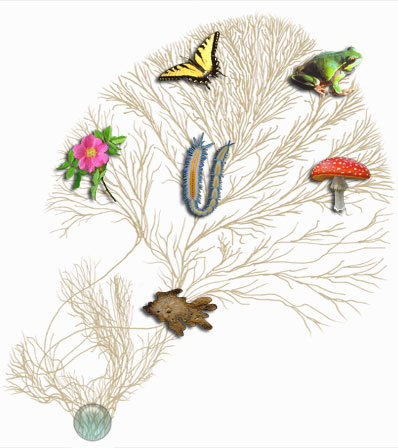Explore the Tree of Life
Browse the Site
News
Darwin 200: the celebration continues... read more
Learn about ...
Angiosperms (flowering plants) image
info
image
info
The angiosperms, or flowering plants, are one of the major groups of extant seed plants...read more
more featured pagesThe Tree of Life Web Project (ToL) is a collaborative effort of biologists and nature enthusiasts from around the world. On more than 10,000 World Wide Web pages, the project provides information about biodiversity, the characteristics of different groups of organisms, and their evolutionary history (phylogeny).
Each page contains information about a particular group, e.g., salamanders, segmented worms, phlox flowers, tyrannosaurs, euglenids, Heliconius butterflies, club fungi, or the vampire squid. ToL pages are linked one to another hierarchically, in the form of the evolutionary tree of life. Starting with the root of all Life on Earth and moving out along diverging branches to individual species, the structure of the ToL project thus illustrates the genetic connections between all living things.
read more about the Tree of Life Web Project...

 The Tree of Life Web Project
is
hosted by The University of Arizona College of Agriculture and Life
Sciences and The University of Arizona Library
The Tree of Life Web Project
is
hosted by The University of Arizona College of Agriculture and Life
Sciences and The University of Arizona Library